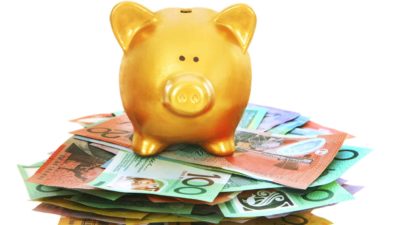I am so sick of down days on the ASX.
I've had enough.
So, I'm going to…
… just keep investing, anyway, because these things happen sometimes (unfortunately) but the overall direction of the market is still likely to be up — strongly — over the long term
That's pretty much it.
That's the formula.
It's not secret.
It's not magic.
But I will add something I've said before, to add some emphasis:
"The ASX has never yet failed to regain, then surpass, its previous highs."
That's not a guarantee, but unless we've seen the all-time peak for the ASX, I think it's something that's likely to happen again and again.
And if that's true, here's what the numbers say:
The All Ordinaries Index (ASX: XAO) closed at 7926.8 points on 4 January, this year.
As I type this, it's at 7362.9 points.
If I'm right, and it goes back above its previous high – as it's done every time – it'll add 8% to get back there.
Then, in all likelihood, more from there.
Sure, it might fall first.
Maybe even by a lot. Or not.
We don't know and can't know.
But that's just noise.
There's 8% on offer, just to do something it's always done.
And if it does fall further in the meantime?
Well, the gain, as we return to past highs – assuming that happens – will be even greater.
And if it doesn't?
Well, we get to lock in that gain.
But what about individual companies?
It's true that some have fallen by more.
A lot more.
Honestly, it depends.
If you own something that was stupidly overpriced in the past, your odds of making back that loss might be long.
Markets regularly get too excited (as well as too pessimistic) about some companies – particularly the 'hot stocks' that everyone is talking about.
Lithium? Maybe.
BNPL? Probably.
But others? Some will bounce out of their share price funk, once investors realise they have strong business models and bright futures.
No, I can't tell you with certainty which is which.
Nor can I tell you how long it might take.
So you need to be diversified, and know what you're buying and the risks you're taking.
More often than not, the moonshots with huge upside potential also have a decent chance of exploding on the launchpad.
Those companies whose growth stories depended on them raising ever more capital from shareholders might be in for a rude shock as interest rates go up and risk appetites wane.
But some will do very, very well.
Now, some of those moonshots won't explode on launch. And some profitable businesses with good cash flows might flounder.
The trick is to know what you're buying, what you're expecting, and your risk appetite.
Frankly, some companies whose shares have plunged 40%, 60% or 80% will be screaming bargains right now, with the benefit of hindsight.
Some will flame out.
If you're a risk-seeking investor, that's where I'd be shopping, as long as you have a seriously cast-iron stomach for volatility and you don't mind a low success rate.
If not, I'd be looking at companies whose business models and cash generation are every bit as good, today, as they were six months ago, even though their share prices may have cratered.
This is not an ad, but for what it's worth, we're recommending one such company to members of Motley Fool Share Advisor this afternoon.
For all I know, the shares could fall tomorrow.
Maybe next week.
Maybe next month.
Or for the next few months.
Or not.
But if the cash generation capabilities of this company (and its ilk) are good enough, we're happy to buy and wait for the market to come to its senses.
You don't see too many entrepreneurs who sell out of their businesses just because of six or twelve month periods where buyers dry up.
You don't buy and sell your home, multiple times a year, because the local real estate agent tells you there is fluctuating interest from buyers.
And yet, many of us are only too quick to let the market tell us what to think about the businesses we're part-owners of.
Woolworths Group Ltd (ASX: WOW) shares were almost $32 a pop in 2014.
They fell to around $17.50 in 2016.
They were back to $41 by late last year.
And that doesn't include dividends.
At $17.50, investors were probably pretty worried.
Some were, by definition, because they sold shares at that price.
Some held.
Others bought, or bought more.
Woolies paid 94c in dividends in the last 12 months.
That's a 5.4% yield, plus franking credits, on the 2016 price.
Plus a rough doubling of the share price, between then and now.
It was easy to buy Woolies shares when the price was going up.
It was hard to buy Woolies shares when the price was falling.
It was hard to buy when the company's Masters chain was bleeding cash and the company was shuttering supermarket stores.
And yet, we know how that ended.
I can almost guarantee – the Good Lord willing and the creeks don't rise – that I will be writing about some of the 2022 laggards in five or six years' time.
And in 2028, it'll be obvious that we should have been buying shares in those companies, rather than fretting over the falls.
So, while others fret, I'm going shopping for shares.
Not because it's comfortable. Not because this is (necessarily) the bottom.
But, as Warren Buffett has told us, again and again, we should be greedy when others are fearful.
Fool on!









